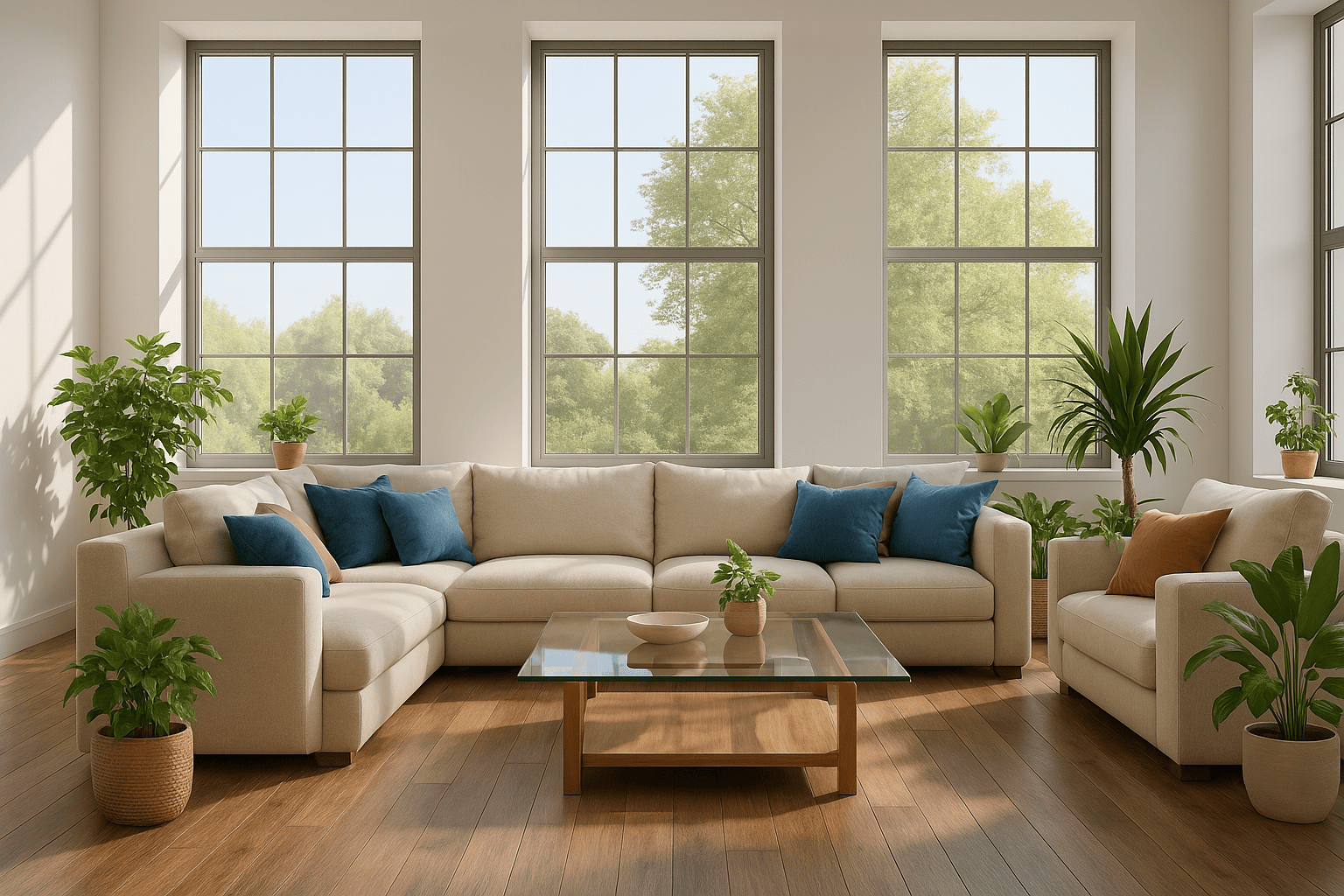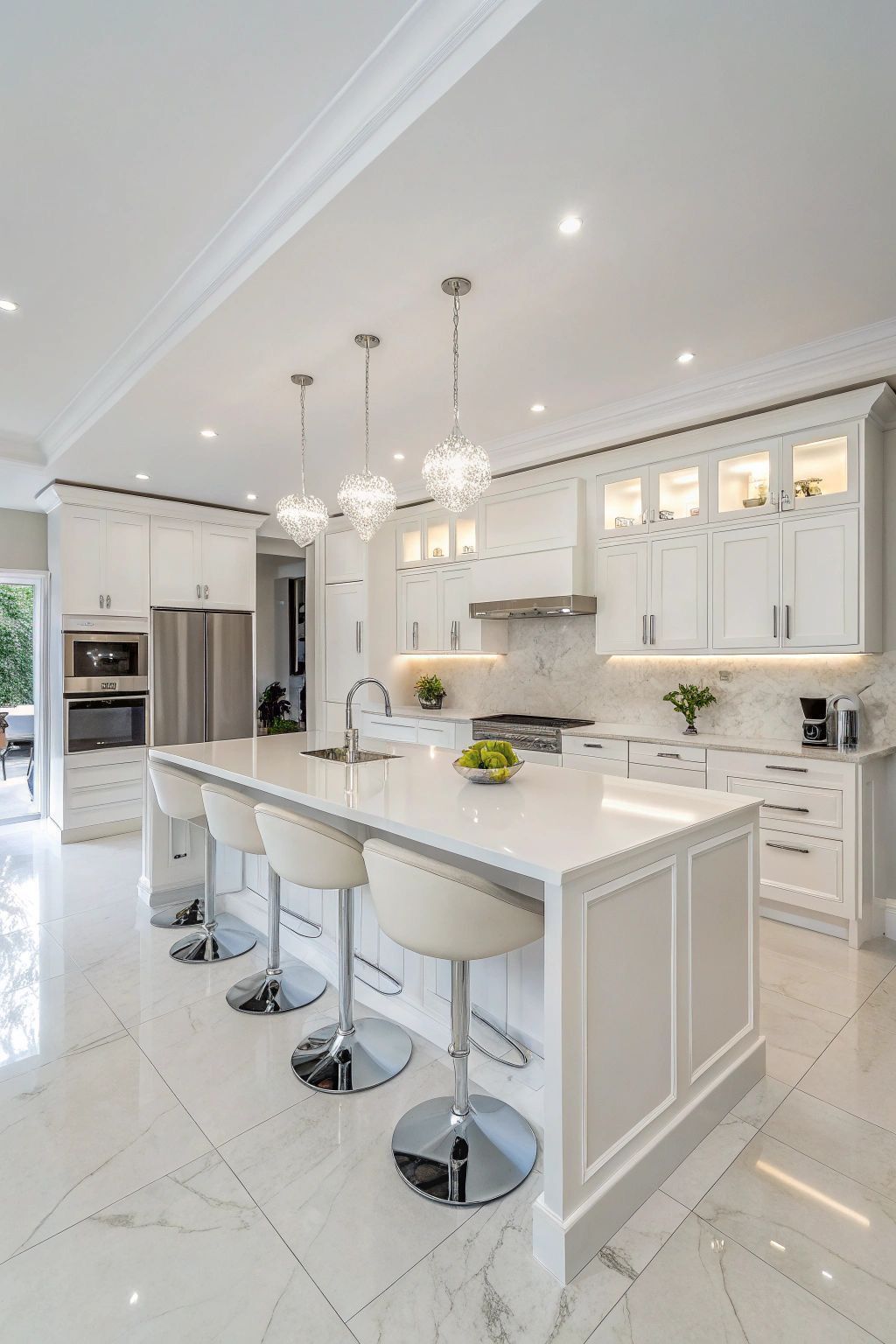Mindful Spaces: Interiors that Soothe and Center

Wellness-centered design goes beyond incorporating nature and natural light—it extends to crafting interior layouts that promote mindfulness, relaxation, and overall mental well-being. A “mindful space” is defined as an environment that encourages calm, clarity, and a positive emotional state by minimizing environmental stressors and supporting mindful living. In today’s fast-paced world, a home should be a refuge, and mindful design achieves this by aligning interior spaces with human psychology and wellness principles.

Creating a Mindful Space A mindful space is one that evokes calm and balance. It is not just about aesthetics; it’s about making people feel good. Key elements include:
Simplicity and Decluttered Organization: Research in environmental psychology shows that excess clutter increases stress. For example, a well-known UCLA study found that women who described their homes as “cluttered” exhibited consistently higher cortisol (stress hormone) levels throughout the day. A Blue Cross Blue Shield report further emphasized that “clutter can increase cortisol… the mental weight of knowing it needs to be addressed increases stress.” Therefore, a mindful home emphasizes purposeful minimalism—not sterile, but free from unnecessary clutter. Solutions include built-in cabinetry, multi-functional furniture with hidden storage, and a “less is more” approach to decor. A clean, orderly room can immediately induce a sense of relief and control.
Therapeutic Use of Color and Materials: Colors have profound psychological impacts. Bold, highly saturated colors can energize or, if overused, agitate; in contrast, soft, muted tones tend to calm. Mindful design often uses a serene palette—gentle earth tones, blues and greens reminiscent of nature, or warm neutrals like whites and beiges—for large surfaces, reserving brighter hues for accents. Natural materials, such as wood, stone, cotton, and linen, add warmth and tactility, creating an inviting, human-centric atmosphere rather than a harsh, industrial feel.
Incorporation of Biophilic Touches: Bringing elements of nature indoors—such as plants, nature-inspired artwork, or even views of a garden—reinforces a sense of calm. These biophilic touches not only improve physical health but also trigger a psychological relaxation response, keeping residents connected to the natural world.
Comfortable, Human-Centered Furnishings and Layouts: Prioritizing comfort and ergonomics is crucial. Furniture should invite relaxation—a plush sofa for unwinding, a supportive reading chair, or a cozy dining area in natural light. Arranging furniture to allow for clear pathways, functional groupings, and personal touches (like family photos or cherished art) fosters a sense of ownership and comfort. Additionally, creating dedicated sanctuary spaces—be it a meditation corner, a window seat nook, or a full-room yoga space—allows residents to escape the bustle of daily life and nurture mindfulness.
Mindful Lighting and Air Quality: Lighting is a critical element that sets mood. While natural light is vital during the day, warm, dimmable artificial lighting in the evening helps signal the brain to unwind. Using lamps with shades, cove lighting, and dimmable LEDs can create a gentle glow without glare. At night, avoiding overly bright or blue-toned lights helps prevent disruptions in sleep. Complementing lighting with proper ventilation and toxin-free materials (like zero-VOC paints) ensures clean air and a healthier indoor environment. Enhancements such as subtle aromatherapy using diffusers with lavender or other calming scents can further reduce anxiety.
Acoustic Comfort and Spatial Layout: A truly mindful space takes acoustics into account. Excessive noise is a common stressor. To counter this, sound-dampening materials—such as plush carpets, acoustic panels, and solid-core doors—are employed to reduce echoes and block outside noise. Even in busy urban areas, additional insulation or white noise features can help maintain a peaceful ambiance.

Practical Design Strategies for Mindful Spaces
Embrace Minimalism & Decluttering: Simplify the design by incorporating ample storage solutions. Built-in cabinets, multi-functional furniture with hidden storage, and a curated decor approach keep surfaces clear and the environment serene. Regular tidying becomes easier when every item has a designated place.
Use Soothing Colors and Natural Materials: Select soft, muted hues for walls, floors, and large furnishings, reserving bolder colors for accent pieces. Integrate natural materials like reclaimed wood or stone to add organic texture that grounds the space and gently enhances emotional well-being.
Integrate Biophilic Touches: Add indoor plants, nature-inspired artwork, and elements such as tabletop fountains or natural pattern textiles. These features provide a sensory connection to nature, promoting relaxation and a present-focused mindset.
Foster Comfortable, Human-Centered Spaces: Prioritize ergonomically designed furniture and personalized decor that reflects the dweller’s taste. Arrange furniture to create designated zones for work, relaxation, and social interaction, ensuring the home feels nurturing and inviting.
Implement Mindful Lighting and Air Solutions: Use adjustable, warm lighting options in the evening—such as dimmable lamps or indirect lighting—to create a calming atmosphere. Ensure proper air quality through good ventilation, toxin-free materials, and even subtle aromatherapy to enhance overall comfort.
Create Dedicated Sanctuary Spaces: Designate quiet corners or specific rooms for mindfulness practices, whether a full meditation room, a cozy window seat with soft lighting, or a simple corner with an inviting armchair. Ensure these areas are free from distractions and well-insulated against noise.
When these elements come together—including clean, uncluttered environments, soothing color palettes, natural materials, biophilic accents, comfortable furnishings, mindful lighting, and thoughtful spatial layouts—the result is a home that actively supports mental well-being. A mindful space not only reduces stress and enhances focus but also cultivates habits of relaxation and self-care. Ultimately, a wellness-designed interior transforms a residence into a haven where residents can consistently "escape, recalibrate, and foster a sense of peace
